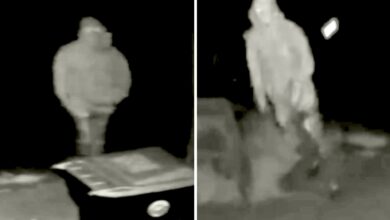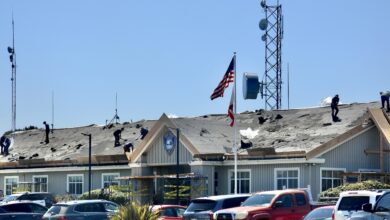Salmon Trollers show river issues caused fishing disaster
Members of Fort Bragg”s Salmon Trollers Marketing Association have used all that unwanted shore time this year to root out the causes of the biggest salmon disaster in California history.
On May 15, a congressional sub-committee held a hearing to probe why the National Oceanic and Atmospheric Administration (NOAA) along with the National Marine Fisheries Service (NMFS) failed to manage rivers better so ocean changes don”t destroy fisheries. Pacific commercial salmon trollers provided much of the testimony about injuries to California”s rivers at that hearing and are helping in the ongoing investigation.
Only about 90,000 adult salmon returned to the Sacramento River and its tributaries to spawn last year, the second lowest number on record and well below the government”s conservation goals, according to federal fishery regulators. That”s down from 277,000 in 2006 and a record high of 804,000 in 2002.
As a result, the tide has begun to turn away from federal assertions that an ocean mystery is to blame. Scientists have steadily joined the fishermen in showing that NOAA had been premature when it named ocean conditions as the cause of the salmon disaster.
That catastrophic drop resulted in a total ban on ocean salmon fishing in California.
Salmon trollers” views
Four Salmon Trollers Marketing Association leaders, President Dean Estep, Ben Platt, vice president Bill Forkner and Mike Rosecrans gathered at Trollers Hall in Noyo Harbor recently with this reporter to discuss their efforts to expose what they see as politically motivated federal and state efforts to divert attention away from problems on the rivers.
NOAA did issue a special press release shortly after the decision to close the season was announced, blaming the failure of salmon to return to the Sacramento River in 2008 on ocean conditions.
“NOAA jumped on ocean conditions as the sole cause before there were any studies done,” said Platt.
“They did that to get the monkey off their own backs,” added Estep.
This reporter has been on NOAA”s press release list for several years and this was the first time one was received that was simply a statement of opinion.
And there is little question that the cause has yet to be established by scientific study.
Now, a brand new study shows that increased water pollution has been killing off much of the food supply in the delta since 2005.
San Francisco State oceanographer Richard Dugdale conducted two studies that show ammonia from a Sacramento sewage treatment plant may be killing fish in increasing numbers, as the human population there has grown rapidly and increased sewage output, the Sacramento Bee reported Sunday.
While the new study has yet to pass peer review and the implications for salmon thoroughly explored, it is just one of many theories to emerge as environmentalists and fishing groups have pressed for more answers.
To the salmon trollers, it is just the latest example of how misunderstood their industry is by the press, public and politicians.
When Forkner visited the Midwest recently, he encountered people who treated his occupation with pure wonder.
“One person said they had no idea people still actually went out into the ocean fishing until they saw Deadliest Catch” on the Discovery Channel.”
“They couldn”t believe anybody would be crazy enough to be a commercial fisherman today,” said Forkner, who is vice president of the STMA.
People may be surprised to find that the STMA has 40 members still crazy about fishing.
An even bigger surprise might be that some think salmon fishing could come back soon in a big way.
“We are only two years away from having a record salmon return, but only, if we do things right. We have got to have enough water to protect the smolts. The state knows how to do it, it can be done if they want to,” Forkner said.
Forkner and Platt have been talking to anybody who will listen, including several reporters, about the need to halt new water diversions, maintain fish hatchery trucking programs and environmental restoration of whole river systems.
“Ben and I have been interviewed on this a few times already. We are getting good at it,” said Forkner.
Forkner said the Bush Administration has political reasons for blaming the Sacramento River salmon disaster on ocean conditions.
NOAA tied the problem to a lack of upwelling below certain latitudes caused by warmer waters. When the nutrient rich cold water didn”t gush up from the bottom, there was no food for the krill and thus the whole food chain.
But that scenario leaves many questions unanswered. The Klamath River, and many others, are having above average runs this year. Only the Sacramento River, the most important in the state, has suffered a catastrophic decline, the trollers said.
“If it was all an ocean thing, why are there 500,000 fish coming back to the Klamath?” said Forkner.
The trollers point out that neither the press nor the regulators have explained the contradictions of believing the federal position that the problems can be traced to a warmer ocean in 2005 and 2006.
“Because only one river was affected, it makes sense that something happened to the fish before they ever got into the ocean,” Platt said.
And some top salmon scientists, such as Dr. Peter Moyle of UC Berkeley, have joined fishermen and environmentalists in denouncing NOAA”s blame-the-ocean-conditions strategy.
Nobody denies that the ocean was much warmer than usual in 2005 and 2006. The trollers see that as one part of the problem.
“There have been many years in the past when the surface temperatures were warmer. We didn”t see drastic ocean conditions based on our catches up until last year,” said Forkner.
Salmon journalist Dan Bacher has been pointing for months to the loss of the food supply in the delta, not the ocean as the cause of the disaster. His documentation of starvation in the delta for baby salmon strikingly matches the findings of the recent ammonia study.
“The salmon are apparently the victims of the delta food chain crash that has resulted in record low numbers of delta smelt, longfin smelt, juvenile striped bass and threadfin shad in the California Delta since 2005,” said Bacher.
“Those smolts may have starved from lack of food as they migrated through the delta, never making it to the ocean. Or they may have ended up stranded in South Delta sloughs and channels, sucked in by powerful reverse flows caused by export pumping, if not destroyed in the pumps themselves,” Bacher wrote.
The trollers, who hadn”t seen the newest study when interviewed, believed increased water diversions and the mismanagement of hatchery fish were prime causes of the disaster.
“During 2005, an unprecedented 6.4 million-acre feet of water was exported out of the delta by the state and federal governments,” Bacher reported.
A smoking gun”
Even more important was the interruption of a program in which salmon were trucked from hatcheries to the delta, acclimated to the salt water, and then sent on their migratory way. Instead, fish were released directly into the delta.
“I guess things were working so well they figured they had to change it,” said Estep.
Bacher reports that the Fishery Foundation of California was not in place in 2004 and 2005, which the trollers say matches perfectly with the demise of the returning population in 2007-2008.
“The absence of the pens apparently contributed to increased salmon mortality when the DFG released them into San Pablo Bay those years. Fortunately, the program will be in place this year when the salmon are released into the bay,” Bacher wrote.
“They went from a 90 percent return with the pens to a 10 percent return,” Estep said. “If you are looking for a smoking gun, that”s a pretty good one.”
The trucking program features eggs being hatched at facilities within the Sacramento River system. To avoid the injured river, young fish are then put into barrels and trucked to the delta, rather than migrating down the river naturally.
Such programs are needed because the rivers have become too warm and too full of predators, farm water pumps and diseases.
Board members are involved in lobbying to see the net pen program is maintained and better managed to avoid interruptions. But they say that must be combined with habitat and streambed restoration.
The issue of hatcheries has become controversial in recent years, due to questions of genetic diversity and the inability of hatcheries to succeed on rivers with constantly lowering water levels and water quality.
Federal authorities have closed down many hatcheries and NOAA has maintained a page detailing the problems with hatcheries.
The trollers said they have seen the positive effect of hatcheries out in the ocean.
“If we don”t have a hatchery program, we are never going back out on that ocean to fish,” said Forkner.
Forkner wonders if the concerted efforts to close hatcheries might be tied to President Bush”s pet idea — fish farms. The trollers fear such farms would be the domain of big, and often foreign, corporations if established, not to mention threatening the health of native salmon with diseases and parasites.
Forkner said both salmon and salmon fishermen are top priorities in Alaska, where the state has done what is needed to keep salmon populations healthy.
In California, both fish and fishermen get dropped into a much more conflicted political stew that includes farm diversions and water for massive new housing projects in the Sacramento area.
STMA”s efforts
At a time when locally-produced food is more needed than ever and when many locals are interested in smaller, local enterprises, the Salmon Trollers Marketing Association is out to show its members fit the bill.
The association is involved in an effort to limit the number of crab pots any one boat can put out in California.
“Our members tend to be the smaller and medium-sized boats, because we do work for limits and the bigger boats don”t want the limits,” said Platt.
In a good year, salmon trollers start working in May and are on the water in the summer and fall. Trollers use a hook and line, similar to a sport fisherman, minus the pole. Six lines run, each with 30 to 40 lures fitted with barbless hooks. Trollers can unhook and release salmon without ever bringing them out of the water. Trolling has very little bycatch.
“We get an occasional rock cod, or a ling cod now and then,” said Estep.
Smaller silver salmon also must be released when hooked.
So beyond stirring up trouble for government regulatory agencies, what are commercial salmon fishermen doing for money with the season canceled?
“Some of us are still crab fishing and some of us are fishing for the small blackcod quotas,” Platt said.
“Some of our members will go to Oregon to chase albacore later in the summer.”




